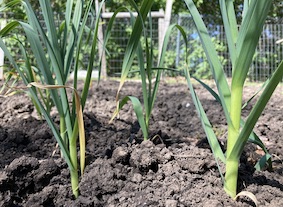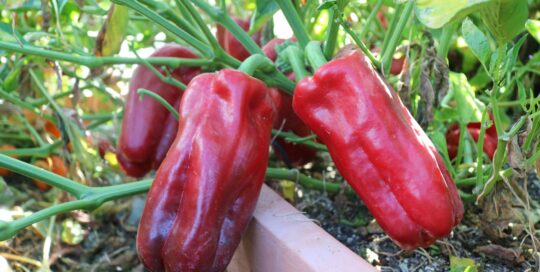Adding a Loam-Compost Mix to the Garden
Views: 2530

I added a loam-compost mix to the vegetable garden and I can tell already that my garden is happier. There’s no outward way to tell if it’s happy. There isn’t a thing planted in it yet. But perhaps my vegetable garden is reflecting my own happiness back to me.
This will be our fourth summer on this property and with this garden. The plot was one that the previous owners had established. And I’m not sure what their actual success was, but we haven’t had much of anything grow in the spot over the last three gardening seasons. We barely had weeds! Was that a good thing or a bad thing? I wasn’t sure. The soil was lacking in something, but what? Or did it have too much of something? We grabbed some soil samples from out garden spot and sent it off to the soil science lab for analysis. You can read the results in my PREVIOUS BLOG POST, but long story short, we had excessive phosphorus and high levels of both calcium and magnesium. Acidity was fine, as were the heavy metal levels. Nitrogen? It’s not tested for in soil tests mainly because it is such a fluctuating element in soil—here one day and taken up the next, then deposited again when some leaves decay.
What Is Loam-Compost?
Two growing seasons later and the plot is still not producing well despite a more attentive eye toward fertilizing with an all-purpose fertilizer. So I decided to add to the fertility of the soil by bringing in better soil. And not just soil, but a 50-50 mix of loam and compost. Loam and compost are two very different things: Loam is a blend of 100% inorganic materials, each batch a varying combination of silt, sand and clay. Compost is 100% decomposed organic materials—food scraps, leaves, even decomposed seafood remnants and animal manures, depending on what compost you find.
Benefits of Loam and Compost
This combination of organic and inorganic materials benefits the existing soil and plants in several ways:
- Compost’s decomposed organic materials adds all the nutrients that existed in the original living material to the soil for the benefit of the living and growing plants and soil microflora.
- Loam provides its own dose of nutrients to growing plants.
- Compost’s structural nature allows for a whole lot of “nooks and crannies” that can hold water for roots to access. That means plants won’t experience as much water stress and watering doesn’t have to be constant.
- Both compost and loam contain a whole world of microorganisms that help the soil’s nutrients become more accessible to plant roots.
- Loam provides a solid structure into which the plants’ roots grow. Plus, its solidity helps the plant develop a strong and sturdy habit, as well.
Did I work the loam-compost into the soil as I laid it down. No, I didn’t! However, I did apply the loam-compost in a layer about 3 inches thick, though. By not digging into the existing soil, I’m not destroying whatever native soil microflora that exists there. Between this native microflora and the surface layer of loam-compost, I am hoping there’s enough “good stuff” in the garden to give my vegetable plants a great start this spring.
Meet Ellen Wells
When you’re raised on a farm, you can’t help but know a thing or two about gardening. Ellen Wells is our expert on edible gardening.…
Ellen's Recent Posts

Pepper Red Impact an All-America Selections Winner






